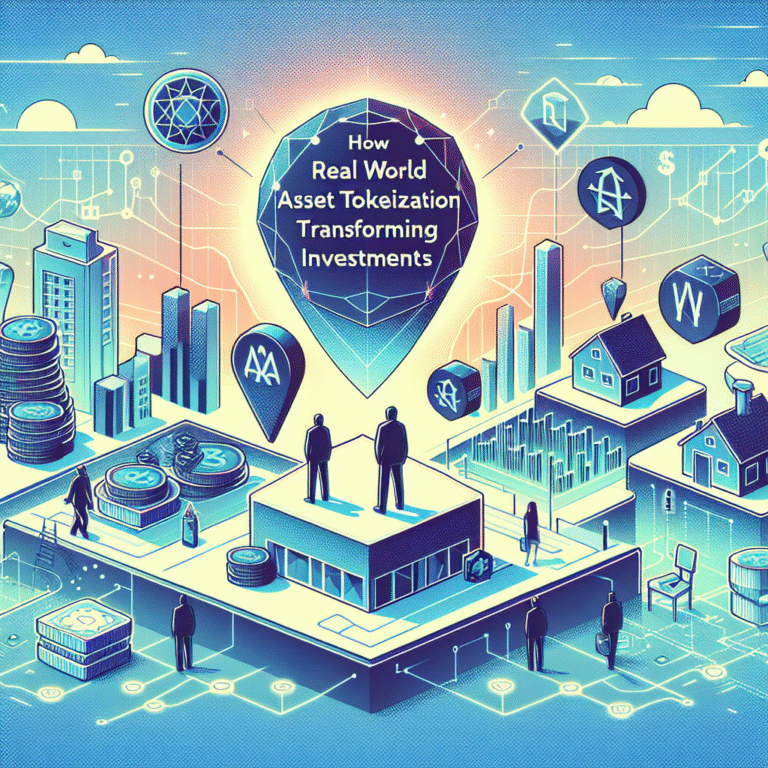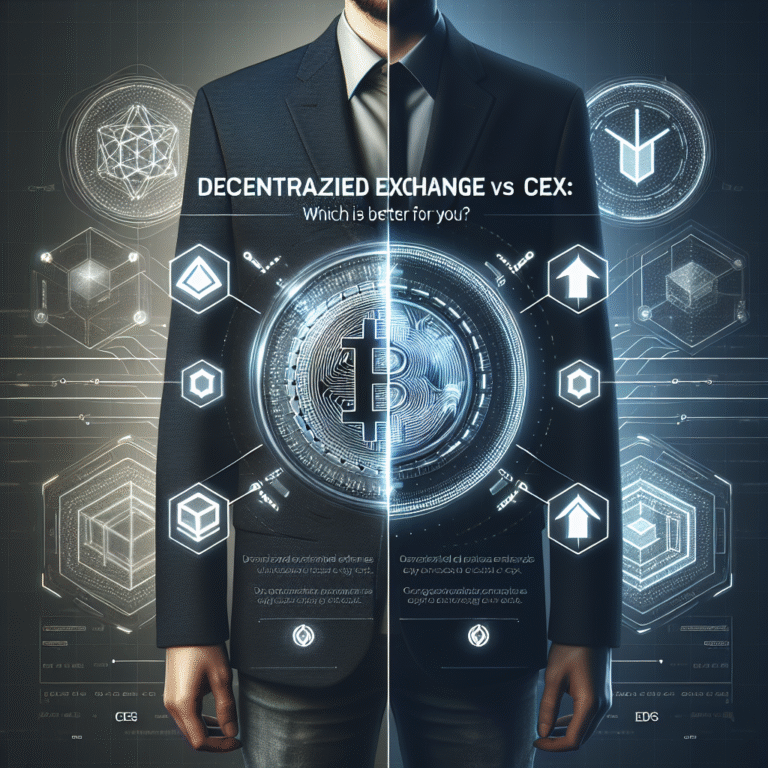“Is Sui EVM compatible?” Developers ask this question more frequently as they look for alternatives to Ethereum’s 8-year old ecosystem. Ethereum’s impressive TVL stands at $68 billion, yet Sui has emerged as a strong contender. Sui’s ability to handle 297,000 transactions per second leaves Ethereum’s performance far behind. In this blog, we will cover how SUI Migration can be performed to bring Ethereum Smart contacts into SUI Ecosystem.
Sui’s blockchain doesn’t natively support EVM compatibility. It runs on the Move programming language, built on Rust to tackle Solidity’s limitations. This core difference creates unique challenges and opportunities for Ethereum’s developers who plan to migrate. Move-based blockchains’ value jumped from $5 billion to $22 billion in just twelve months. This massive growth shows the rising interest in this ecosystem. Sui’s unique consensus mechanism combines Narwhal and Tusk.
This setup helps separate simple transactions from complex ones, which works especially when you have gaming and immediate applications. You might wonder about Aptos vs Sui, or question Sui’s investment potential given its market cap surge from $1.39 billion to over $9.7 billion. This piece breaks down everything about moving from Ethereum to Sui in 2025.
Understanding Ethereum and Sui Architectures
Ethereum and Sui both use Proof-of-Stake (PoS) consensus mechanisms. Their different architectural approaches affect developer experience, scalability, and performance in unique ways.
Ethereum: Monolithic PoS with Solidity
Ethereum works as a monolithic blockchain. All nodes process the same transactions and keep similar copies of the entire state. The second-largest cryptocurrency by market cap switched from Proof-of-Work to Proof-of-Stake through “The Merge.” This change substantially reduced its energy consumption.
Smart contracts in Ethereum run on the Ethereum Virtual Machine (EVM) using Solidity, a high-level programming language that draws from C++ and JavaScript. Solidity’s features like inheritance, libraries, and complex user-defined types make it popular among blockchain projects. These features can lead to security risks such as reentrancy attacks and integer overflows.
The platform processes transactions one after another in an “order-execute” model. This creates a bottleneck because the EVM stops all other transactions until the current one finishes. As a result, mainnet throughput stays at 15-30 TPS. The system needs about 13 minutes (or two epochs) to confirm transactions.
Sui: Modular PoS with Move and Object-Based State
Sui takes a different approach with its modular architecture and object-centric data model. This design lets Sui process multiple transactions at once, which makes it much faster and more scalable.
Objects, not accounts, are the simple units of data storage in Sui. These programmable objects work as user-level assets with specific attributes, making asset management more straightforward. Sui stores objects directly in user accounts on-chain, unlike other blockchains that keep assets in smart contracts. This gives owners direct control of their assets.
The platform uses Move programming language, built to handle assets and access control. Move’s linear logic ensures digital assets can’t be copied or destroyed by accident, making it more secure than Solidity. The language’s type system needs clear definitions, which improves safety and reduces common vulnerabilities.
Consensus Models: Ethereum Beacon Chain vs Sui’s Narwhal-Tusk
The Beacon Chain coordinates Ethereum’s consensus. Validators stake ETH as collateral to propose and validate blocks. Random validator assignments prevent centralized control, but transaction confirmation takes about 13 minutes across two epochs.
Sui uses a two-layer consensus system with Narwhal and Bullshark. Narwhal manages data availability as a mempool module. It organizes transactions in a Directed Acyclic Graph (DAG) instead of a linear blockchain. Bullshark then orders the validated certificates without validator communication, since transaction validation and DAG view syncing are already done.
This innovative system helps Sui:
- Process simple transactions with owned objects without consensus using FastPay
- Handle complex transactions with shared objects through Narwhal-Bullshark consensus
- Confirm transactions in about 390-400 milliseconds
- Process more than 120,000 transactions per second
These architectural differences show why Sui isn’t EVM compatible. Its core design principles and programming model take a completely different path from Ethereum, focusing on parallel processing, object-orientation, and better security.
EVM Compatibility on Sui: What Developers Need to Know
Developers who want to move from Ethereum to Sui must first tackle a basic compatibility question. This shapes how the whole migration process works. The right understanding of these differences will lead to successful project migration.
Is Sui Blockchain EVM Compatible?
Sui Network is fundamentally incompatible with the Ethereum Virtual Machine (EVM) that powers Metamask and other Ethereum tools. This incompatibility comes from Sui’s unique blockchain architecture and programming model. Smart contracts from Ethereum cannot run directly on Sui without major changes. Many Layer 1 blockchains focus on EVM compatibility to make migration easier. However, Sui chose a different path by using the Move programming language and object-centric data model to deliver better performance and security.
Move vs Solidity: Key Differences
The main difference between these platforms lies in their smart contract languages. Ethereum’s language Solidity takes inspiration from C++ with object-oriented structures. It supports inheritance, libraries, and complex user-defined types. Move, specifically Sui Move, works in a completely different way:
- Resource-Oriented Design: Move handles assets as first-class “resources” that users cannot copy or accidentally destroy. This prevents common vulnerabilities
- Static vs Dynamic Dispatch: Solidity uses dynamic dispatch to resolve functions at runtime. Move determines static function calls at compile time
- Security Focus: Move’s design eliminates common vulnerabilities like reentrancy attacks that often affect Solidity contracts
- Asset Representation: Solidity defines assets as numerical types that are easy to reuse but vulnerable to attacks. Move’s resource types enforce strict ownership rules
Smart Contract Porting Challenges
Moving from Ethereum to Sui needs complete rewrites of smart contracts. Ethereum’s model stores all asset data inside the contract itself. This makes contracts vulnerable if developers code them incorrectly. Sui’s object-centric approach uses unique IDs in the form of Map<ObjectID, Object> to identify objects. This prevents double-spending problems. Such architectural differences mean developers must rethink how contracts handle state and ownership.
Tooling Support for EVM Developers
Sui provides tools to help with migration despite the incompatibility. The platform supports over 500 dApps running DeFi platforms, NFT marketplaces, and gaming applications as of May 2024. Sui’s ecosystem includes development frameworks that help Solidity developers switch to Move. These frameworks come with specialized IDEs, testing tools, and documentation that help bridge the gap between Ethereum and Sui’s programming models.
Developers face a clear choice: give up direct EVM compatibility and familiar Solidity patterns to gain Move’s better security, performance benefits, and parallel execution. This trade-off enables Sui’s impressive speed of up to 125,000 transactions per second.
Migration Steps from Ethereum to Sui
Moving from Ethereum to Sui needs a clear plan since Sui doesn’t work with EVM. Developers must carefully guide through four key steps to migrate successfully.
1. Assessing Smart Contract Dependencies
A complete review of your Ethereum smart contracts will help identify all dependencies and limitations. This review should include:
- Auditing your code for bugs or inefficiencies
- Noting third-party integrations that need migration
- Determining how on-chain data will transfer to Sui’s object-based model
This assessment matters because Sui’s object-oriented model is different from Ethereum’s account-based approach. Ethereum keeps assets within contracts, while Sui treats them as unique objects with built-in ownership tracking—creating a completely different architecture.
2. Rewriting Contracts in Move
Sui blockchain isn’t EVM compatible, which means contracts need a complete rewrite in Move. The Move programming language brings several benefits:
- Resource-oriented design stops assets from being copied or accidentally destroyed
- Module-based architecture creates more maintainable code
- Built-in security features remove common vulnerabilities like reentrancy attacks
Move’s syntax looks like Rust, making it easier for developers who know that language. Your redesign should use Move’s object-centric approach instead of copying Solidity patterns.
3. Testing and Debugging on Sui Devnet
Testing becomes crucial after rewriting your contracts. Sui provides debugging features through the std::debug module:
- Import the debug module with
use std::debug; - Add
debug::print(&v);statements to monitor variable values - Use
debug::print_stack_trace();to track execution flow
Local testing should come first. Then deploy your contract to Sui’s Devnet—a public test environment that mirrors mainnet conditions. This lets you see how your contract works in realistic conditions before final deployment.
4. Deploying to Sui Mainnet
Deploy your contract to Sui Mainnet using the Sui CLI after successful testing:
sui client publish --gas-budget 20000000 [path to package]
Export your package ID next:
export PACKAGE_ID=<package object ID>
You can call functions in your deployed contract:
sui client call --function [function_name] --module [module_name] --package $PACKAGE_ID --gas-budget 10000000
Note that Sui might not be EVM compatible, but its architecture brings major performance improvements. This makes the migration effort worth it for many applications.
Performance and Cost Benefits of Migrating to Sui
Projects migrating from Ethereum to Sui offer exceptional performance gains that make rewriting code worthwhile, despite Sui lacking EVM compatibility. The benefits become clear when we look at key metrics that affect user experience and costs.
Transaction Speed: 13 TPS vs 300,000 TPS (Testnet)
These platforms show a stark difference in throughput. Ethereum handles about 13 transactions per second on average. Sui’s testnet has shown it can process up to 300,000 TPS. Sui reached 860 TPS on July 8, 2024 in actual use, which still beats Ethereum substantially. This huge advantage comes from Sui’s parallel transaction system. It works like multiple checkout lines at a store, while Ethereum uses just one line.
Gas Fees: Global vs Local Fee Markets
Sui brings a fresh “local fee market” approach that reshapes transaction costs:
- Ethereum runs a global fee market where network traffic affects all transactions
- Sui splits fees based on which blockchain parts users access
- Users face higher fees only when specific applications get busy (like a particular DEX pool)
- Sui keeps average transaction costs low at about 0.002797 SUI
This setup shields users from sudden gas cost spikes. One team spent around $50,000 on Ethereum gas fees during development. The same work cost less than $50 on Sui.
Finality Time: 13 Minutes vs 400ms
Transaction finality shows remarkable improvement. Ethereum takes about 13 minutes to confirm transactions. Sui does it in 400 milliseconds. Mysticeti upgrades cut Sui’s consensus time by 80%, bringing finality down to 39 milliseconds even with high traffic.
Storage and Execution Efficiency
Sui’s object-focused data model creates natural storage and execution benefits. Validators can add servers as needed, which leads to linear scaling. Eight times more hardware means eight times more throughput without extra delay. Sui processes 200MB of data per second, twice what Solana handles, while keeping sub-second finality.
Ecosystem and Developer Support on Sui
Sui’s ecosystem has grown faster than expected, even without EVM compatibility. Developers are drawn to its unique architecture and comprehensive support programs.
DeFi and GameFi Projects on Sui
The DeFi sector on Sui shows impressive growth numbers. The Total Value Locked (TVL) jumped from $25 million at launch to over $2 billion by May 2025. This makes Sui the third-largest non-EVM chain by TVL. Major protocols include:
- DeepBook – The first native liquidity layer on Sui that supports market and limit order swaps
- Cetus – A pioneering liquidity protocol with swaps, farms, pools, and vaults
- Suilend – A lending platform that reached $450 million TVL within eight months
- NAVI – A DEX aggregator boasting $714 million TVL and 800,000+ users
The platform’s object-oriented model makes it a natural fit for gaming applications and in-game asset management.
Developer Incentives and Grants
The Sui Foundation drives ecosystem development through non-dilutive grants between $10,000 and $100,000. The foundation has given out $6.7 million to 126 projects so far. Developers get technical mentorship, marketing support, and access to Sui’s developer network.
Community Growth and Active Devs
Developer activity on Sui has surged 219% since early 2024, with about 1,400 developers staying active through June. The Discord server now has 700,000+ members, and code contributions have grown by 125%. Most developers on Sui build exclusively on this platform.
Sui vs Ethereum: Ecosystem Maturity
Ethereum has a more established ecosystem, but Sui’s innovative features drive quick adoption. Users can now log in with Web2 credentials thanks to zkLogin. This removes a major barrier to entry. In spite of that, Sui is still in its early stages compared to Ethereum, with a market cap that’s roughly 3% of ETH’s.
Comparison Table
| Feature | Ethereum | Sui |
| Transaction Speed | 15-30 TPS | Up to 297,000 TPS |
| Programming Language | Solidity | Move |
| Consensus Mechanism | Proof-of-Stake (Beacon Chain) | Proof-of-Stake (Narwhal-Bullshark) |
| Transaction Finality | ~13 minutes | ~400ms |
| Architecture Type | Monolithic | Modular |
| Data Model | Account-based | Object-centric |
| State Storage | Smart contract-based | Direct on-chain objects |
| EVM Compatibility | Native | Not compatible |
| Transaction Processing | Sequential (order-execute) | Parallel execution |
| Asset Management | Contract-stored assets | Direct object ownership |
| Security Features | Vulnerable to reentrancy attacks | Resource-oriented design prevents common vulnerabilities |
| TVL (as mentioned) | >$68 billion | ~$2 billion (May 2025) |
| Market Position | Second-largest cryptocurrency | Third-largest non-EVM chain |
| Monthly Active Developers | Not mentioned | ~1,400 (June 2024) |
Conclusion
Moving from Ethereum to Sui is more than just a simple switch – it’s a complete technical transformation. Sui may not be EVM compatible, but developers see great advantages in this challenging experience. Both platforms have completely different architectures. Ethereum uses a monolithic structure, while Sui follows a modular, object-centric model. This means developers must rewrite their smart contracts in Move instead of Solidity.
Performance numbers show Sui’s clear advantages. Sui can process up to 297,000 TPS, while Ethereum handles just 15-30 TPS. On top of that, it takes only 400ms to finalize transactions on Sui compared to Ethereum’s 13 minutes. These technical benefits make developers willing to migrate despite the compatibility challenges.
The migration needs careful planning. Teams must assess dependencies, rewrite contracts in Move, test thoroughly, and deploy to mainnet. This process might be demanding but helps teams discover the full potential of Sui’s parallel transaction processing. Its resource-oriented design also removes common vulnerabilities found in Solidity contracts.
Sui’s ecosystem has grown faster as the third-largest non-EVM chain with about $2 billion TVL. Monthly active developers have grown by 219%, and many choose to build only on Sui. These growth numbers prove Sui’s importance even as a newcomer.
Choosing between Ethereum and Sui depends on what your project needs. Ethereum brings maturity, wide adoption, and extensive tools. Sui offers better performance, lower costs, and improved security through its innovative design. Developers should weigh these factors carefully. The effort to rewrite smart contracts could be worth it given Sui’s performance benefits and future growth potential.
Key Takeaways
Migrating from Ethereum to Sui requires complete smart contract rewrites but delivers significant performance and cost advantages for developers willing to embrace a new paradigm.
• Sui is not EVM compatible – requires complete contract rewrites in Move language, not simple migration from Solidity
• Massive performance gains – Sui processes up to 297,000 TPS vs Ethereum’s 15-30 TPS with 400ms finality vs 13 minutes
• Cost-efficient local fee markets – Sui’s segmented fee structure protects users from network-wide gas spikes unlike Ethereum’s global model
• Growing ecosystem momentum – Sui became third-largest non-EVM chain with $2B TVL and 219% developer growth since 2024
• Enhanced security through Move – Resource-oriented programming prevents common vulnerabilities like reentrancy attacks plaguing Solidity
While Ethereum maintains ecosystem maturity with $68B+ TVL, Sui’s object-centric architecture and parallel processing capabilities make it compelling for performance-critical applications, especially in gaming and DeFi where transaction speed and cost efficiency are paramount.
FAQs
Q1. Is Sui blockchain compatible with Ethereum’s EVM? No, Sui is not EVM compatible. It uses a different programming language called Move and has a fundamentally different architecture, requiring complete rewrites of smart contracts when migrating from Ethereum.
Q2. What are the main performance advantages of Sui over Ethereum? Sui offers significantly higher transaction speeds (up to 297,000 TPS compared to Ethereum’s 15-30 TPS), much faster finality times (400ms vs 13 minutes), and more cost-efficient fee structures due to its local fee market approach.
Q3. How does the programming language differ between Ethereum and Sui? Ethereum uses Solidity, while Sui uses Move. Move is resource-oriented, preventing common vulnerabilities like reentrancy attacks, and offers better asset representation and security features compared to Solidity.
Q4. What steps are involved in migrating a project from Ethereum to Sui? The migration process involves assessing smart contract dependencies, rewriting contracts in Move, testing and debugging on Sui’s devnet, and finally deploying to Sui’s mainnet. This requires a complete overhaul of the project’s codebase.
Q5. How does Sui’s ecosystem compare to Ethereum’s in terms of development activity? While Ethereum has a more mature ecosystem, Sui has shown rapid growth. As of 2025, Sui became the third-largest non-EVM chain with $2 billion in Total Value Locked (TVL) and experienced a 219% increase in monthly active developers since early 2024.




